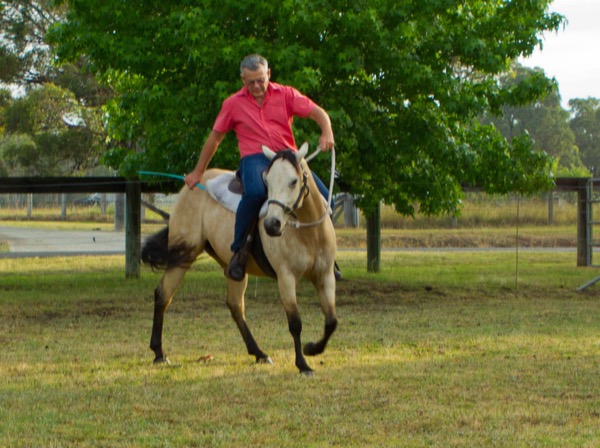Whenever you ride, you must remember that your horse has a mind of his own.
He may want to run home when you try to leave the barn.
He may think it easier to run along in the trot rather than canter when you ask.
He may want to stay down one end of the arena because he’s ‘worried’ by something at the other end.
There are a hundred and one other things that your horse may want to do when you ride him.
You must remember that your horse won’t do anything because he loves you.
He won’t walk, trot or canter when you ask because he ‘enjoys’ it.
Your horse will do only what he sees as being easiest under the circumstances.
If it’s easier for him to run home than do as you ask, then that’s what he’ll do.
If it’s easier for your horse to run along in the trot, rather than canter when you ask, then that’s what he’ll do.
If it’s easier for him to stay down one end of the arena, rather than move to where he’s ‘worried’, then that’s what he’ll do.
We often hear that all you need is a light touch on the rein or a light squeeze with your legs to make your horse respond.
Yes, it’s true that every horse can feel the lightest touch or squeeze.
However, your horse may think that a light touch or a gentle squeeze is nothing much to worry about –it doesn’t affect him unduly, so he’ll keep doing as he pleases.
If this is the case, you must increase the level of pressure –unpleasantness –in small increments, until your horse starts to respond as you wish.
This means that you must pull more firmly on the reins, or tap your horse with a stick, or touch him with a blunt spur at the appropriate time.
As soon as your horse responds as you wish, you must immediately give the rein and stop using your stick or spur.
Then your horse will learn to respond to the lightest touch or squeeze.
He won’t wait for a pull on the reins, or a tap with the stick, or a touch with the spur.
You can see this in action in my Fear-free Fundamentals Online Clinic.
If you don’t reinforce your lessons at the right time, your horse will know that he can always do as he pleases.
If there’s no unpleasant consequence for his undesirable behaviour, he’ll keep doing it.
It’s up to you as a rider, to make things unpleasant for your horse when he isn’t doing as you ask.
Equally, you must always make things easy and pleasant for your horse when he is doing as you ask.
Every horse will soon learn to look for the easy and pleasant way.
Over time, you’ll need less and less of the unpleasant and more and more of the easy and pleasant.
Your horse will eventually learn to respond to the lightest touch of your rein or the smallest squeeze from your legs.
Unless you’re prepared to be firm at the right time, by pulling the rein, tapping with a stick or touching your horse with a blunt spur, you won’t achieve true lightness.
And you’ll never really have full control of your horse.
Learn more here

